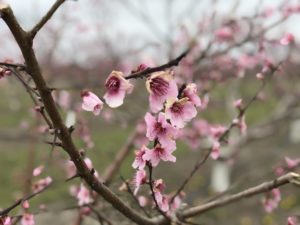Spring Garden Chores
go.ncsu.edu/readext?673839
en Español / em Português
El inglés es el idioma de control de esta página. En la medida en que haya algún conflicto entre la traducción al inglés y la traducción, el inglés prevalece.
Al hacer clic en el enlace de traducción se activa un servicio de traducción gratuito para convertir la página al español. Al igual que con cualquier traducción por Internet, la conversión no es sensible al contexto y puede que no traduzca el texto en su significado original. NC State Extension no garantiza la exactitud del texto traducido. Por favor, tenga en cuenta que algunas aplicaciones y/o servicios pueden no funcionar como se espera cuando se traducen.
Português
Inglês é o idioma de controle desta página. Na medida que haja algum conflito entre o texto original em Inglês e a tradução, o Inglês prevalece.
Ao clicar no link de tradução, um serviço gratuito de tradução será ativado para converter a página para o Português. Como em qualquer tradução pela internet, a conversão não é sensivel ao contexto e pode não ocorrer a tradução para o significado orginal. O serviço de Extensão da Carolina do Norte (NC State Extension) não garante a exatidão do texto traduzido. Por favor, observe que algumas funções ou serviços podem não funcionar como esperado após a tradução.
English
English is the controlling language of this page. To the extent there is any conflict between the English text and the translation, English controls.
Clicking on the translation link activates a free translation service to convert the page to Spanish. As with any Internet translation, the conversion is not context-sensitive and may not translate the text to its original meaning. NC State Extension does not guarantee the accuracy of the translated text. Please note that some applications and/or services may not function as expected when translated.
Collapse ▲Spring weather and spare time may encourage you to tackle those spring garden chores. If you’re thinking about what needs to be done in the garden, consider the following:
- Cut back dead growth. Whether it’s an old perennial with winter damage or last season’s growth, you can cut it back now (if you haven’t already). Keep in mind that many plants have already flushed with new growth, so take care not to cut what’s newly emerged.
- Prune lightly. Heavy pruning should already be complete, but it’s not too late to touch up trees or shrubs that have a few branches in the way, or that may be broken or damaged. Use sharp, sterilized pruning tools.
- Mulch after the soil has warmed. Mulch can be applied around the base of a plant to encourage health and reduce weeds. Mulch with an organic material (ex. pinestraw, shredded hardwood) to a depth of around 3 inches. Avoid letting the mulch touch the plant, and avoid using landscape fabrics.
- Fertilize trees & shrubs. If you want to give the plant a boost, now is a great time to get some fertilizer out. Plan to fertilize again in late June.
- Study up on your lawn. What to do in your lawn can depend on what type of lawn you have. Visit Turfgrasses to find out more.
- Ask for help. N.C. Cooperative Extension of Gates County continues to maintain assistance through online, email, and telephone contact. Call the office at (252) 482-6585 or email katy_shook@ncsu.edu with any questions.





